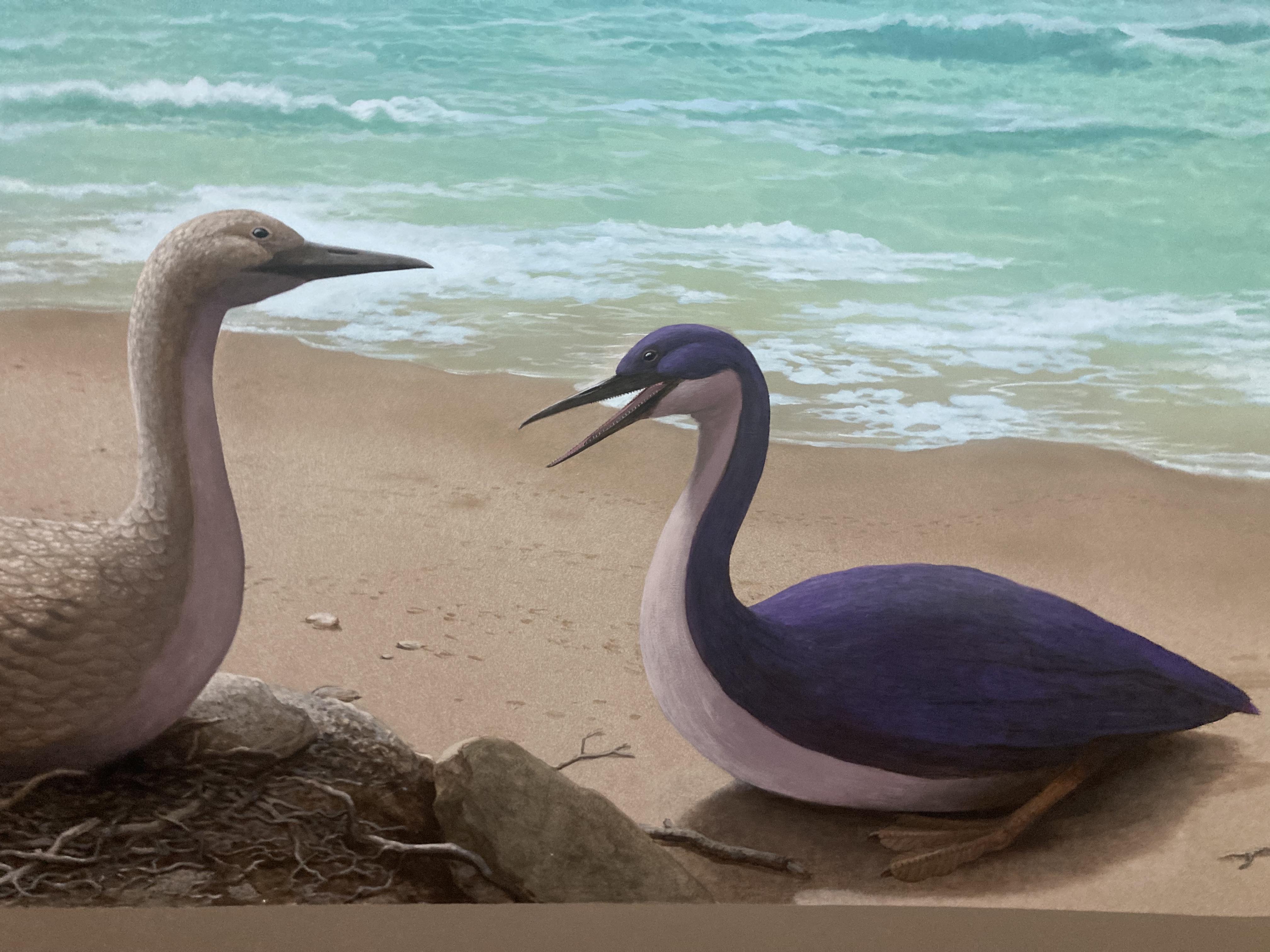Searching for Flying Dinosaurs
Contact
University of Arkansas System Division of Agriculture
Cooperative Extension Service
2301 S. University Ave.
Little Rock, AR 72204

Searching for Flying Dinosaurs
Birds have become of more interest to me in the past few years as I’ve taken the time to watch them more closely. Always interested in understanding the evolutionary back story of organisms, I was glad to get a review copy of Jill Hunting’s “For Want of Wings” (University of Oklahoma Press, 2022). In it she describes her quest to learn more about her great grandfather, who discovered a 70 million-year-old flightless bird in western Kansas with dinosaur teeth. On my way west this summer, my first stop was at the Sternberg Museum of Natural History in Hays, Kansas, where fossil remains of this strange bird are housed.
The author’s ancestor, Thomas Russell, discovered the fossil in 1873 in late Cretaceous age limestone rocks. These formed when western Kansas was part of the enormous inland sea that once filled much of what is now the Great Plains. Russell had signed up with Yale’s Charles Marsh, who lead expeditions into the Wild West every summer looking for dinosaur bones. Marsh was the paleontologist who, in the infamous “bone wars” of the late 19th century, battled with Edward Cope, a wealthy Philadelphia bone collector who did much of his work traveling with U.S. Geological Survey teams. Marsh had discovered a headless specimen of this bird a year earlier, but the head — and especially the teeth — were needed to understand what they had found.
This was a time when paleontology was gaining importance in the scientific community. In 1861, a 145 million-year-old feathered bird-like dinosaur called Archaeopteryx was discovered in Germany. This was only two years after Charles Darwin published his “Origin of Species.” The notion that birds might have evolved from dinosaurs was afloat, but more specimens were needed. Marsh helped fill that void in 1870 when he named a seagull-like bird he called Ichthyornis that was collected from the same age rocks there in Kansas. Adding the toothy grin of Hesperonis a couple of years later helped firmly establish the notion that modern birds evolved from the tribe of two-legged dinosaurs called theropods.
Hesperonis was a feathered, wingless bird that stood about five feet tall and had strong, probably webbed feet for swimming. It was apparently a cormorant-like shore bird adapted for swimming that hunted the shallow inland sea, somewhat like modern penguins of today. Then catastrophe struck. The giant asteroid that collided with Earth about 66 million years ago killed off almost 70 percent of the life on the planet — including all of the dinosaurs, except the ones we now know as birds.
The Kansas birds with teeth tell part of the story of bird evolution, but understanding how modern birds evolved and survived the calamity of an asteroid strike requires a deeper dive into the geological past. The discovery of the treasure trove of Jurassic age feathered dinosaurs in China in the mid 1990s better illustrates the evolutionary path of modern birds.
First, let us consider size. The big dinosaurs get all the attention, but from their genesis, enormous bulk was not the only option for survival. From the beginning of the dinosaur line, some creatures became bigger and bulkier while others optimized survival by developing diminutive size. They coexisted in the same geologic time, but who wants to talk about a tiny dinosaur when the big ones are a lot more fun?
Then let us consider feathers. It is now believed that the earliest dinosaurs had what are called “proto-feathers,” something akin to the hair we have on our arms. This is believed to have been for temperature regulation: dinosaurs first appeared in a relatively cold period of Earth history. Just like elephants today, dinosaur skin is believed to have retained these hair follicles even though they appeared to have smooth, tough skin.
Adaptation of these hair strands into the complex structures found in feathers began early, with small, fully feathered dinosaurs found in China dating back 160 million years. The best known of these feathered dinosaurs is Sinornithosarus which dates back about 125 million years. These early feathered dinosaurs split into two clades, with Sinornithosarus and Hesperonis in the branch that went extinct with the rest of the dinosaurs.
But the other branch of feathered dinosaurs survived the extinction event and gave us the diversity of birds we see today. The hollow bones, the formation of the wishbone and accompanying large breast muscles to power the wings — and all the other features that make birds birds — was a slow evolutionary slog, not a chance mutation that resulted in an abrupt change. But slow and steady wins the day when there is plenty of time.
